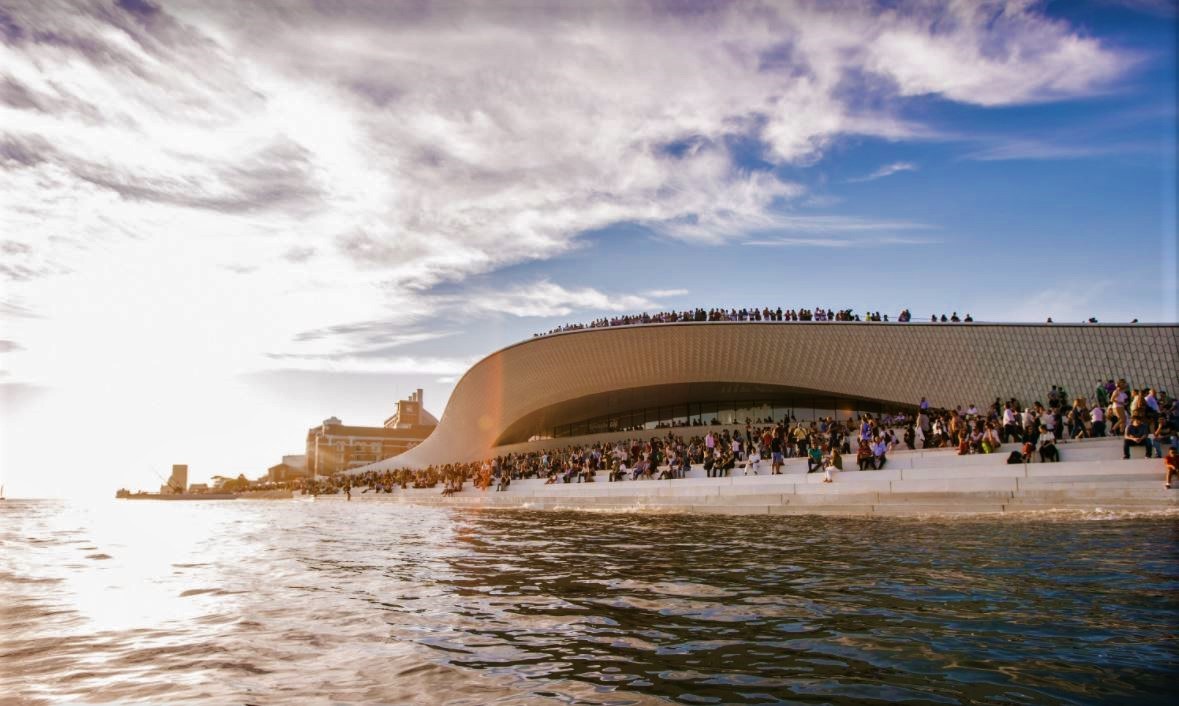
The tranquil beauty of Lake Ontario inspires Mississauga’s most ambitious project ever—what will it create?
With the green light from Mississauga’s planning committee Monday, the fun begins.
One of North America’s largest waterfront developments will rapidly rise above the shores of Lake Ontario, along the city’s eastern edge, a massive, gleaming promise to future generations that will flock to Lakeview Village.
The unsurprising unanimous approval from councillors sets the table for Lakeview Community Partners (LCP), a construction consortium tying together some of the province’s biggest builders.
It’s unlikely they have ever had a canvas like this.
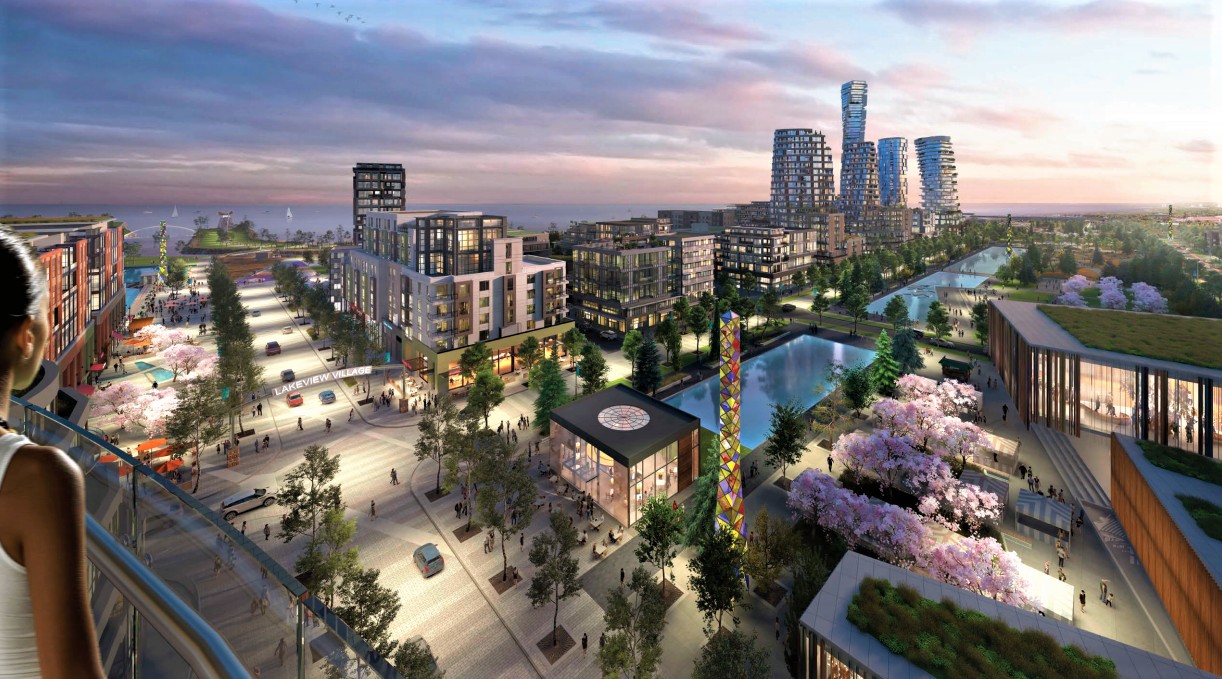
A rendering of Lakeview Village
(Lakeview Community Partners)
The unparalleled development will create history and a home for almost 20,000 new residents in more than 8,000 units. It’s now up to the architects and planners to design a space that lives up to its majestic setting. The right mix of community-minded design and flamboyant inspiration could create a destination that attracts visitors from around the world.
A museum rising from the lake whose form is shaped by the water—art that houses art. High-rises that match the shapely brilliance of the city’s Marilyn Towers. Green spaces that leave visitors awestruck… until their return.
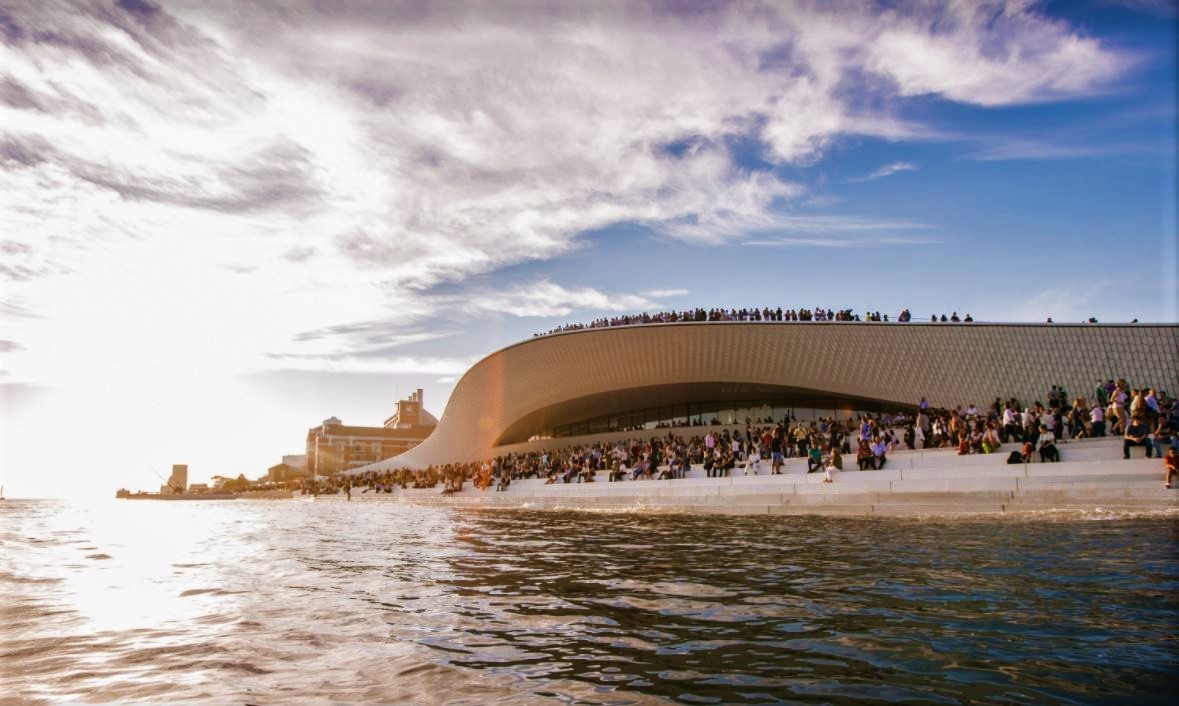
The Museum of Art, Architecture and Technology in Lisbon has drawn worldwide attention to the Portuguese capital.
(Courtesy MAAT)
Over several years, LCP, City Council and the community have gone back and forth on certain details. The developers pushing one idea and the community pushing back harder, leaving the councillors to mediate from the middle.
But that is mostly done now.
It’s time for Mississauga and all Lakeview’s stakeholders to dream.
Since the previous presentation by LCP, the final plan included upgrades to certain features the community wants to see: a larger school area, moving density to accommodate the expanded area, including regionally owned land on the west side of the site for a traffic roundabout, adding a temporary location for a new parks’ operation depot and widening streets to include cycling tracks, other active transportation and environmental features.
While there is a general consensus on what the project should create, its success, as both a thriving community and unique cultural space, will depend on how dynamic LCP wants to be.
Many of the leaders behind the consortium will not get a blank slate like this again, one that sits along the pristine shoreline of a singular design element—the spellbinding waters of a truly Great Lake.
The old Four Sisters power plant used to occupy the sprawling parcel of land, the only way such sought after real estate was kept from the developer’s shovel for so long.
The 177-acre property at 1082 Lakeshore Road East and 800 Hydro Road will host 8,050 units, 47 acres of parkland, restaurants, boutiques, canals and skating rinks. Cultural features, possibly an homage to The Mississauga who protected the area centuries ago, have been promised.
There will be a business and employment district. There are visions of community oriented spaces near the hypnotic waterfront, where friends and families will gather for evening walks along uniquely designed paths. Shopping and gallery viewings will draw others to a place unlike anything that exists in Mississauga today.
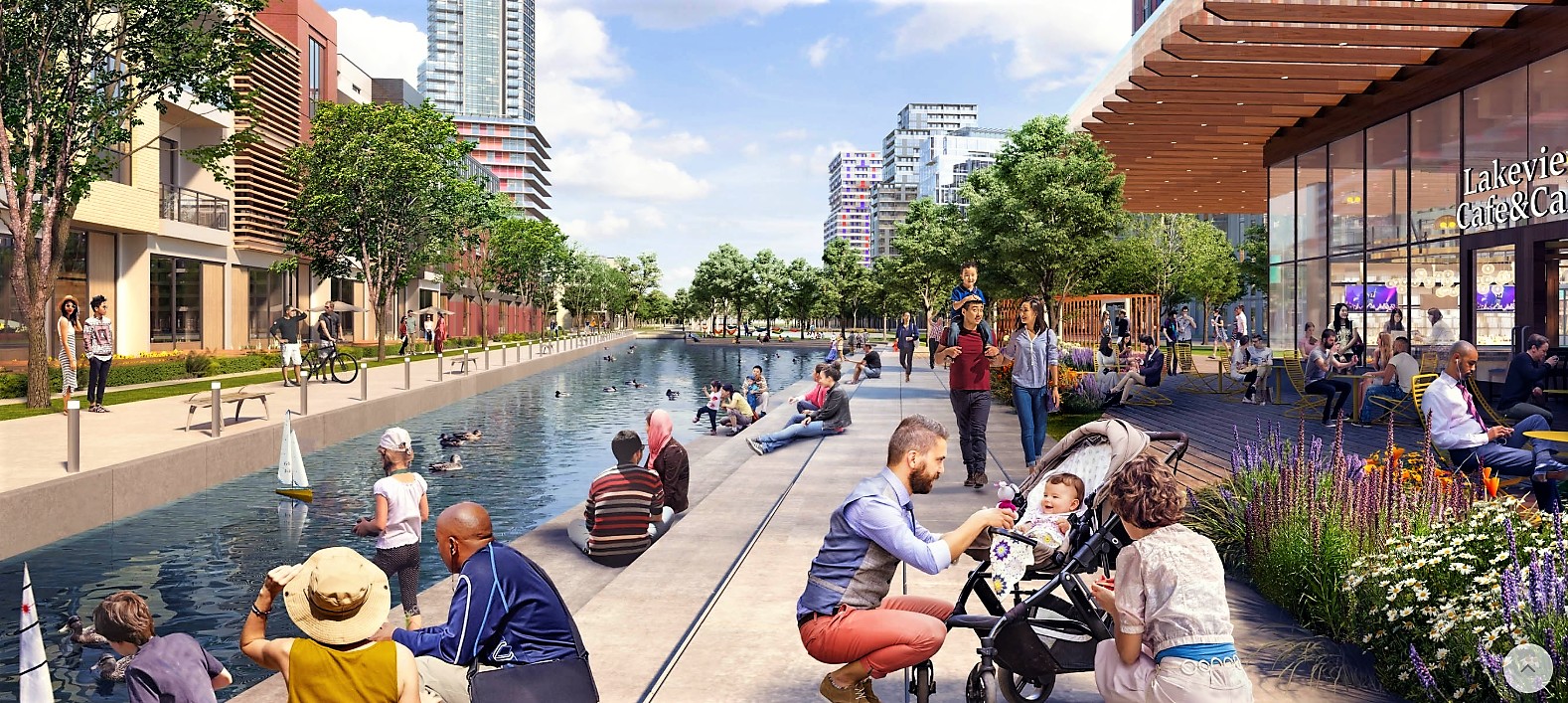
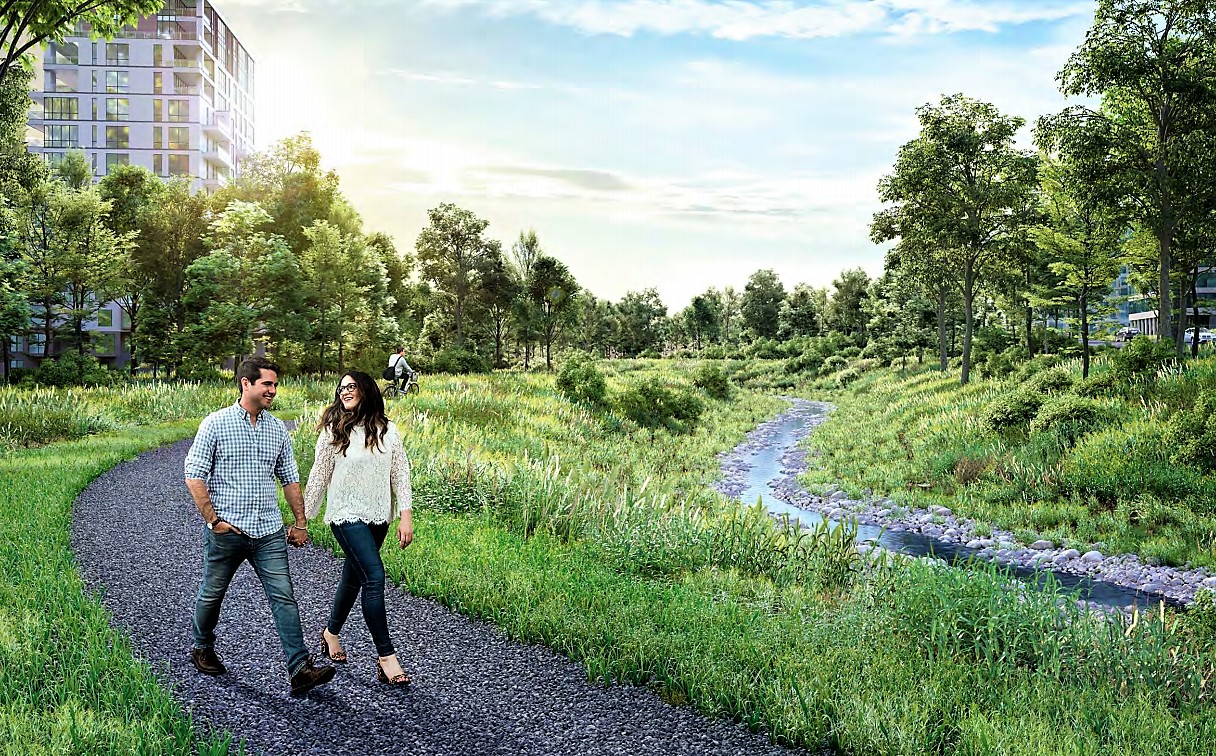
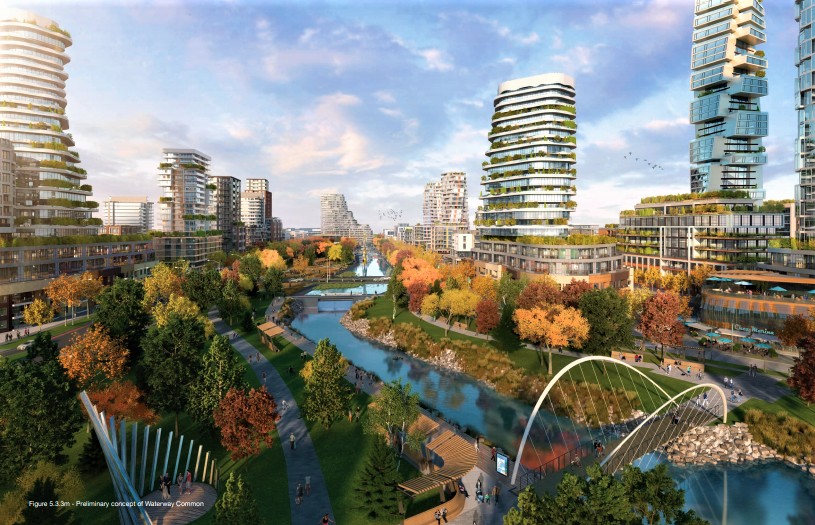
(Lakeview Community Partners)
Instead of wide streets for vehicles and typical single-detached homes, the plans for Lakeview are elevated through a new, healthy and walkable community framework. Bike paths will be implemented, and LCP has put forward a plan to limit the amount of parking spaces for cars on the site. With partial funding for a rapid bus route down Lakeshore Road, there is confidence one day many will take transit to the community instead of carbon emitting vehicles.
There are goals to design Lakeview with the natural world as a guide. Situated beside the planned Jim Tovey Conservation Area, the development will be surrounded by thriving ecosystems. LCP has said it intends to use green technologies and animal friendly products to sustainably build the site.
Some features include mandatory electric vehicle charging stations on all parking spaces, business blocks will be required to have green, solar or white roofs, and windows will be bird and pollinator friendly.
The developers have retained a company to study the feasibility of a district energy system. The low-carbon thermal energy network could have pipes running underground and use less energy to heat and cool buildings if each includes a special boiler and chiller technology that could avoid 6,000 tonnes of carbon emissions annually.
Another green aspiration is a vacuum trash system, which would decrease waste by 175,000 kilograms every year. Working with the Region of Peel (which is in charge of waste management) and Envac (private partner), LCP hopes to explore the potential for a system that would replace traditional curbside pick-up. Instead of bins full of recycling, garbage and organic waste left to the elements (and animals), residents would be able to throw items into a high speed tube which would transport waste to a treatment facility.
Currently, the site is being remediated from it’s coal-factory past, a process which has an anticipated completion date of December 2022, including the risk assessments and filing for records of site condition.
There are still a few loose strings and moving parts yet to be decided, under the authority of City Council, and the province.
After a clear indication of a need for affordable housing through various Regional and City reports, Council has agreed to LCP’s commitment of five percent affordable housing. Of the roughly 8,000 units this means approximately 400 are deemed affordable by LCP.
Some of the affordable housing proposed by the developers are actually market rental units, which according to the Region are not deemed as affordable housing.
“While the purpose-built market rental units are desirable in providing rental tenure units at more affordable prices, the rental rate for market units would not meet the Regional definition of affordable housing,” a Peel Region housing report states.
The City of Mississauga defines affordable housing as, “when housing costs (including utilities, taxes and maintenance costs) do not exceed 30 percent of the household’s before-tax income.”
Average income in the municipality was recorded in 2015, and to provide context the average income after taxes that year, along with the average one bedroom rental property, provides a local idea of affordability.
According to Statistics Canada, the median after tax income in 2015 was $28,899. According to the Toronto Real Estate Board from the same year, a one-bedroom apartment was priced at $1,067 a month (it is much higher now, between $1,600 and $1,900, while incomes have remained relatively flat).
For this earner, an affordable home defined by the City would be 30 percent of their annual after-tax income, which is $8,660, so they would not be able to afford an average one-bedroom unit. Now, according to recent rental prices and wage-inflation data, the median income in the city would not be able to afford even half the rent of an average unit.
Recent staff reports by the Region explain how approximately 80 percent of households in Peel cannot afford rental or home ownership here.
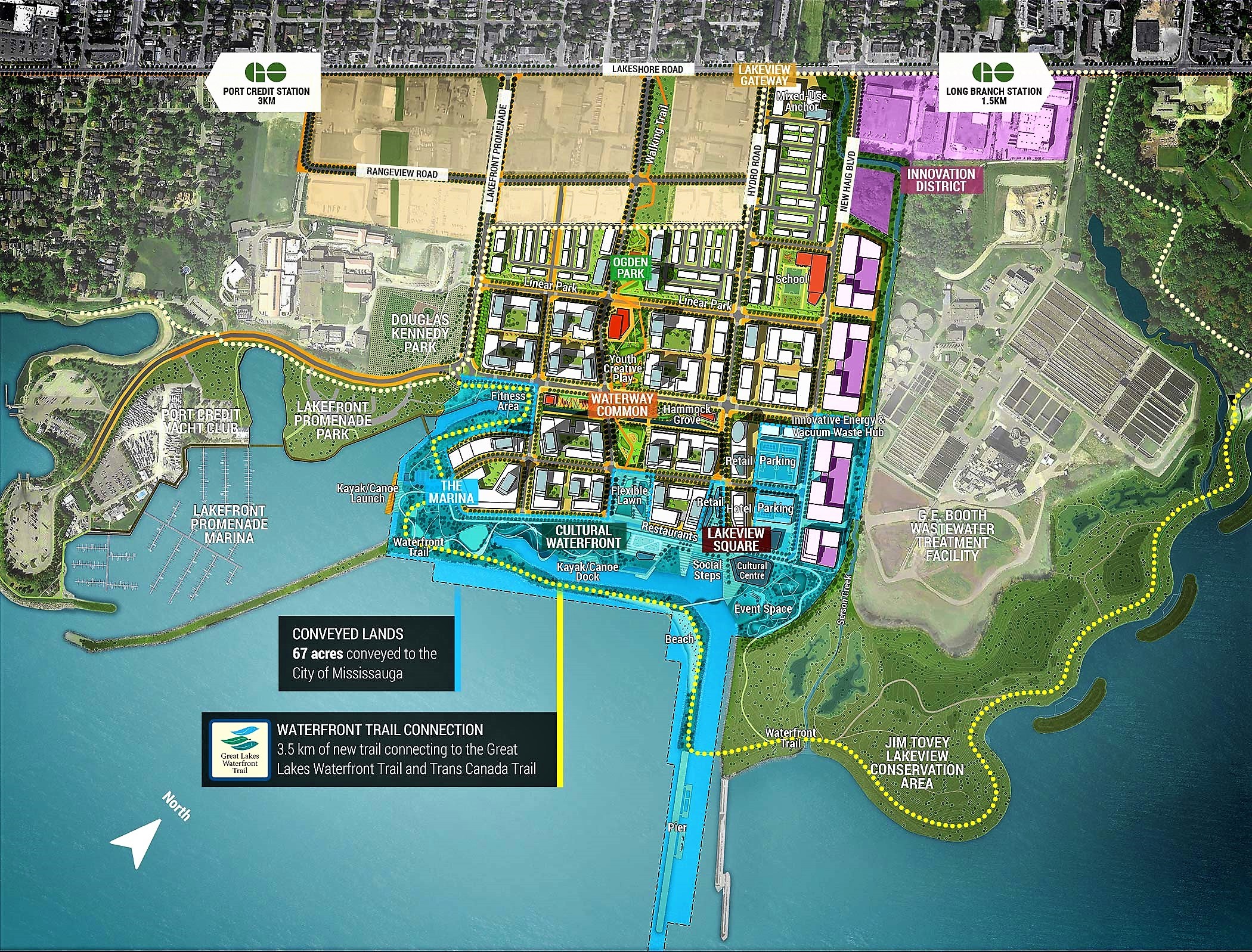
The current land is vacant but offers many possibilities to the community.
(Lakeview Community Partners)
Even if you accept the “five percent” affordable housing claim by LCP, 400 units is merely a drop in the bucket for the desperately needed affordable housing crisis in Mississauga and in the rest of the Region. Near the end of 2020, the housing subsidy waitlist topped 22,445 households, a 50 percent increase from the end of 2019.
However, council threw in the towel for more units. The original ask was 10 percent for affordable housing.
“I just want the community to be rest assured that we tried our best and you feel that what's been contributed in terms of number of units is in line with what we've been receiving elsewhere,” Mayor Bonnie Crombie said at the planning and development committee meeting Monday, before casting her vote alongside her colleagues in favour of the LCP proposal that staff had already endorsed.
What is being received elsewhere, for affordable housing in other development projects, is clearly not enough considering the number of people on the housing waitlist, and all the others who are not on the list but can not keep up with the skyrocketing housing costs. Staff’s recommendation was conclusive, without legislative power to mandate the units, five percent was, “a fair amount.”
“This is essentially the city asking if they [LCP] would be willing to provide affordable housing and so we looked at what we've been getting and the five percent of the overall development reflects, I think, slightly better than what we're usually getting in other development applications,” David Breveglieri, a planner in the planning and building department for the City of Mississauga, said. He failed to point out that a large chunk of those 400 units will not actually be affordable.
The units will range from on-site third-party mortgage units (to fulfill the missing middle), on-site affordable housing provided in partnerships with third-party financial contributions, and up to 150 market rental units.
“A drop in the ocean for what we need,” Deborah Goss, president of the Lakeview Ratepayers Association, said at Monday’s meeting.
The presentation from staff to the committee also highlighted certain areas that will need further input from council, as the development slowly gets underway.
Portions of the project are under holding orders, which prevent development until a certain problem can be resolved. There are three main reasons certain parts of the development are being held; noise, odour and traffic capacity.
On the furthest eastern side of the site there will be 1.5-million square feet of land dedicated to an innovation corridor, hosting businesses and office space. The project can proceed up until 1 million square feet, then the holding clause will come into effect on the remaining 500,000 square feet, until traffic improvements can be made to the area.
The required improvements will need to occur at Lakeshore Road and Cawthra Road, Lakeshore Road and Dixie Road, Lakeshore Road and Lakefront Promenade, and Lakeshore Road and Hydro Road.
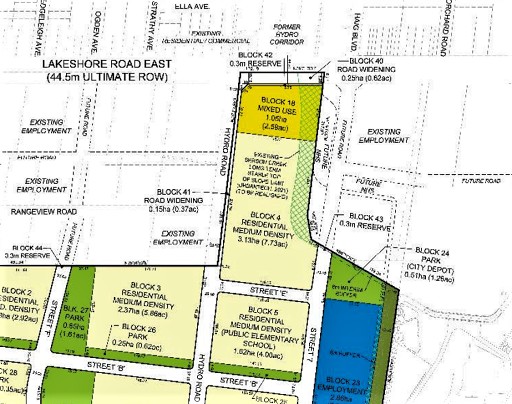
A number of blocks have holding labels on them because of traffic issues.
(City of Mississauga)
“Now, not withstanding those improvements, some development will still need to be held back,” Breveglieri said.
Along with part of the innovation corridor, residential blocks 4 and 18 (closest to Lakeshore Road) will also have to be held until traffic improvements are made. These two buildings and the entire innovation corridor will not be completed until the bus rapid transit (BRT) line is constructed, which is set for 2027.
Additionally, blocks 4 and 18 will also need to be held until the extension of Haig Boulevard and Ogden Road are completed.
Noise studies were conducted and according to the City’s bylaws, two areas falling to the north end of the site will exceed ‘class-four’ noise laws. The two areas are labeled as a holding zone, meaning until noise sources are either mitigated or operations stop from the nearby industrial buildings, development cannot proceed.
LCP and the Region of Peel are attempting to eliminate the smell from the G.E Booth wastewater facility, which lines the eastern edge of Lakeview Village. The improvements by Peel are set to be completed by 2027, until then LCP will pay for the installation of some odour-reducing measures at the oldest part of the plant — the site which was most noxious. Until the smell is completely removed, the blocks closest to the waste facility will have a holding label.
“In the old days when I was growing up, depending on which way the wind blew you kind of knew which area of town you're in,” Ward 1 Councillor Stephen Dasko said of the longstanding odour in the neighbourhood he now represents.
Height of buildings has been a point of contention between the community and LCP. The first proposal from the developers hosted multiple high-rise towers collected near the water’s edge, and increased density quickly, which would boost their profits.
While the tug of war slowed and LCP compromised on many residential blocks, there are still a few towers with unappealing heights for the Lakeview Ratepayers Association.
“We will continue to advocate for the reduction of the waterfront 24-storey building to 12 stories with a redistribution of those units to the centre of the site. And we will look for compromises in the Marina District,” Goss said at Monday’s meeting.
The final approved plan sees the tallest towers situated around the future transit corridor, along the central north/south park and waterway district. The buildings reach heights of 24, 29 and 40 storeys, with the tallest building, among the cluster, furthest away from the waterfront. City staff and council voiced their satisfaction with the heights, which are not nearly as outsized as many of the waterfront buildings in Toronto.
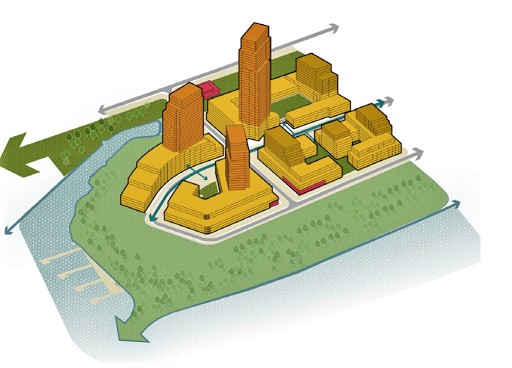
The tallest building proposed by LCP is 40 storeys, followed by 29 and 14-storey buildings, all condensed in the marina area.
(City of Mississauga)
“We hope to become the gem, the destination and the fulfillment of the promise of being world class,” Goss said of the potential of the plans.
The inception of the plan was thanks in large part to the late Ward 1 councillor Jim Tovey, who made it his mission to create a new urban community along the waterfront in place of the Lakeview coal-fired power plant that stood on the site for five decades. Along with passionate community leaders, the plan melded into a lower density area packed with parklands and public access to the water.
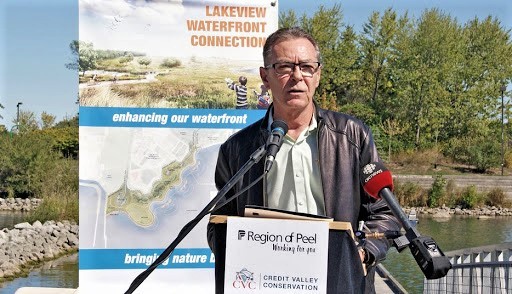
Late councillor Jim Tovey was instrumental in bringing Inspiration Lakeview to life.
(Credit Valley Conservation Authority)
Over the years, the development has been shifted and the original plans of the community morphed into a much larger project. Throughout the process LCP has dealt decently with residents, listening to their concerns and finding some compromises, according to numerous stakeholders who have expressed their appreciation for a development partner that has sincerely listened to the local community.
“We have been unable to find another example of bottom up planning from a community that has led the call for designing its own urbanization,” Goss said.
It was also clear from the words of council members and staff that LCP has kept community values at the forefront of the design process.
Like any multifaceted project, there will be growing pains and adaptations to come. However, on Monday there was no denying the sense of excitement as one of the world’s largest waterfront projects finally moved forward.
Now, it’s up to the visionaries who will build it, to make Lakeview truly world class.
Email: [email protected]
Twitter: @taasha__15
COVID-19 is impacting all Canadians. At a time when vital public information is needed by everyone, The Pointer has taken down our paywall on all stories relating to the pandemic and those of public interest to ensure every resident of Brampton and Mississauga has access to the facts. For those who are able, we encourage you to consider a subscription. This will help us report on important public interest issues the community needs to know about now more than ever. You can register for a 30-day free trial HERE. Thereafter, The Pointer will charge $10 a month and you can cancel any time right on the website. Thank you
Submit a correction about this story


